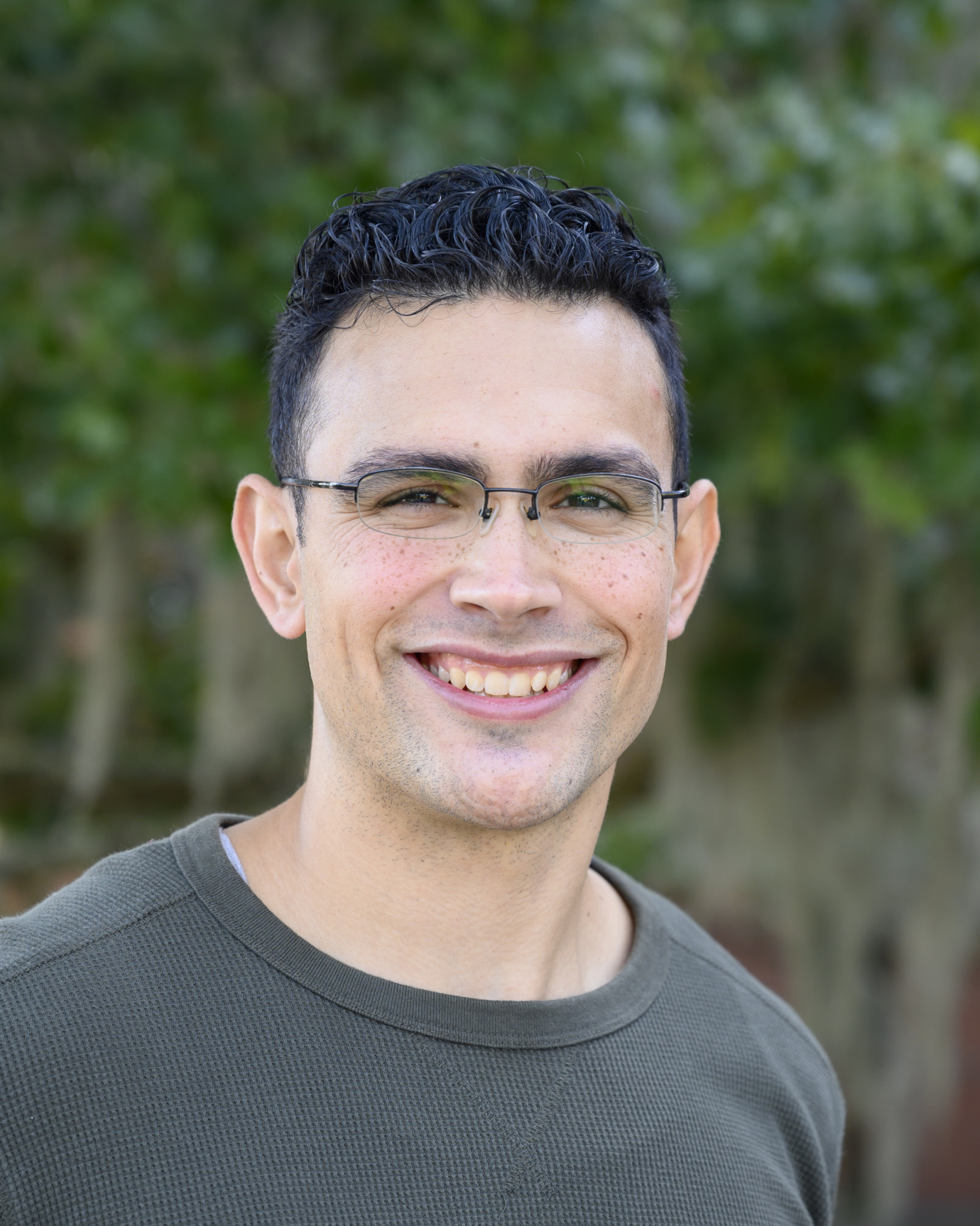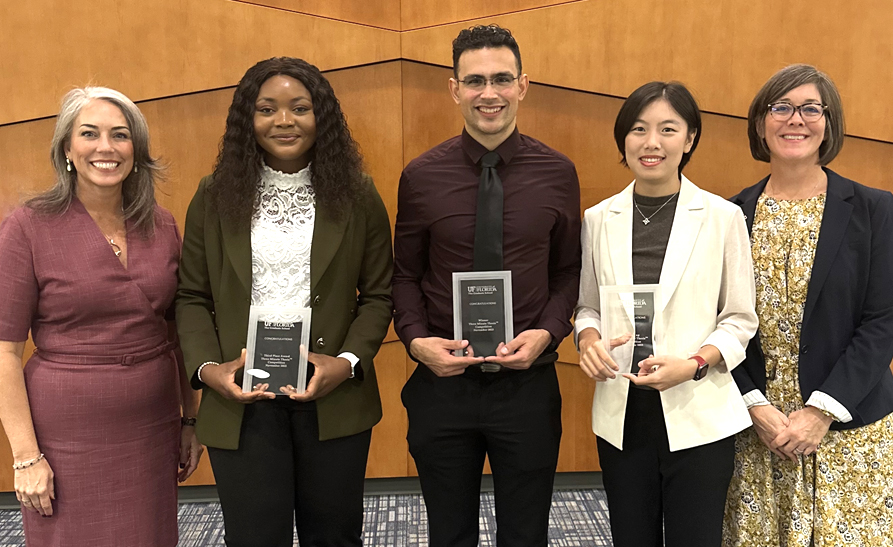Luis Torres, a second-year doctoral student in the University of Florida’s department of geological sciences, has won first place in this year’s Three Minute Thesis Competition. Torres is advised by Michal Kowalewski, the Thompson chair of invertebrate paleontology at the Florida Museum of Natural History.
The competition requires that doctoral students condense their dissertation research into a presentation no more than three minutes in length that appeals to and can be easily understood by a broad audience. Participants are allowed to use only a single, static image while presenting, and anyone who goes over the time limit is disqualified.
This put Torres, who works in the new and still relatively unknown field of conservation paleobiology, at a disadvantage. He needed to get the audience up to speed on an entire scientific discipline before he could adequately explain what he studied. Luckily, he had a common denominator that he was sure would grab everyone’s attention.

Florida Museum photo by Kristen Grace
“When people hear the term paleontology, they mostly think about gigantic prehistoric beasts, like T. rex and Triceratops,” Torres said. “I used that as a hook to transition into conservation paleobiology.”
Torres works with marine invertebrate fossils, which are littered across the ocean floor in layers so thick they create their own stratigraphy. For scientists who want to know what ancient ecosystems looked like, these fossil layers provide an invaluable glimpse into the past. This uncovered history, in turn, gives conservationists a baseline by which to assess the diversity and stability of modern ecosystems.
“People have been influencing the environment for the past 1,000 years,” Torres said, noting that the intensity and scale of human-wrought change have dramatically increased over the last few centuries. The only way to know what an ecosystem free of human influence looks like is to study organisms that lived and died before our species became industrialized.
The principle is straightforward, but accurately reconstructing ancient environments is like trying to interpret the fragmentary image from a puzzle that’s missing most of its pieces. Even durable fossils, like bones and shells, are subject to the dismantling forces of time. In the oceans, skeletal remains of marine animals are broken up by waves, disarticulated by scavengers and scattered by currents. Those that survive to the present are rarely ever preserved intact.
Torres is looking for ways to fill in the gaps. One group of organisms he studies, called echinoids, include sand dollars and sea urchins. Like mollusks, echinoids produce a hard, exterior shell, sometimes covered in protuberances or wreathed in a phalanx of spines. But echinoid shells are brittle compared with those of mollusks, and they break more easily as a result.
Scientists intuitively know that echinoids have delicate shells, but Torres said, the idea has never been quantified. Without knowing the rate at which echinoids become fossilized, it’s virtually impossible to accurately infer how many individuals and species once inhabited an environment.
Torres collected marine sediment samples across the coast of Florida during his first year, and he used the relative proportion of fragments to the known abundance of living echinoids in the region to determine how often their shells break. In the Gulf of Mexico, their shells are 72 times less likely to stick around than mollusks’, a statistic that can now be plugged into an equation and augment our understanding of natural history.
For the remainder of his dissertation, Torres intends to use these methods to study seagrass beds on either side of the Florida Peninsula.
“Seagrasses on the Gulf side of Florida are doing pretty decently, whereas on the Atlantic side, especially near the Indian River Lagoon, most of the seagrasses are gone,” he said. Torres thinks that invertebrate fossils in places where seagrass once flourished might bear the imprint of the bygone ecosystem and clues as to when and why it disappeared. “It could make seagrass restoration more efficient.”

Photo courtesy of the graduate school at the University of Florida
Torres received a $1000 first-place award, which he intends to put toward his upcoming wedding. He will go on to compete in the state finals early next year.
You can watch a full recording of this year’s final competition, or read more about this year’s winners on the University of Florida’s graduate school website.
Source: Luis Torres, ltorres2@ufl.edu
Writer: Jerald Pinson, jpinson@flmnh.ufl.edu, 352-294-0452